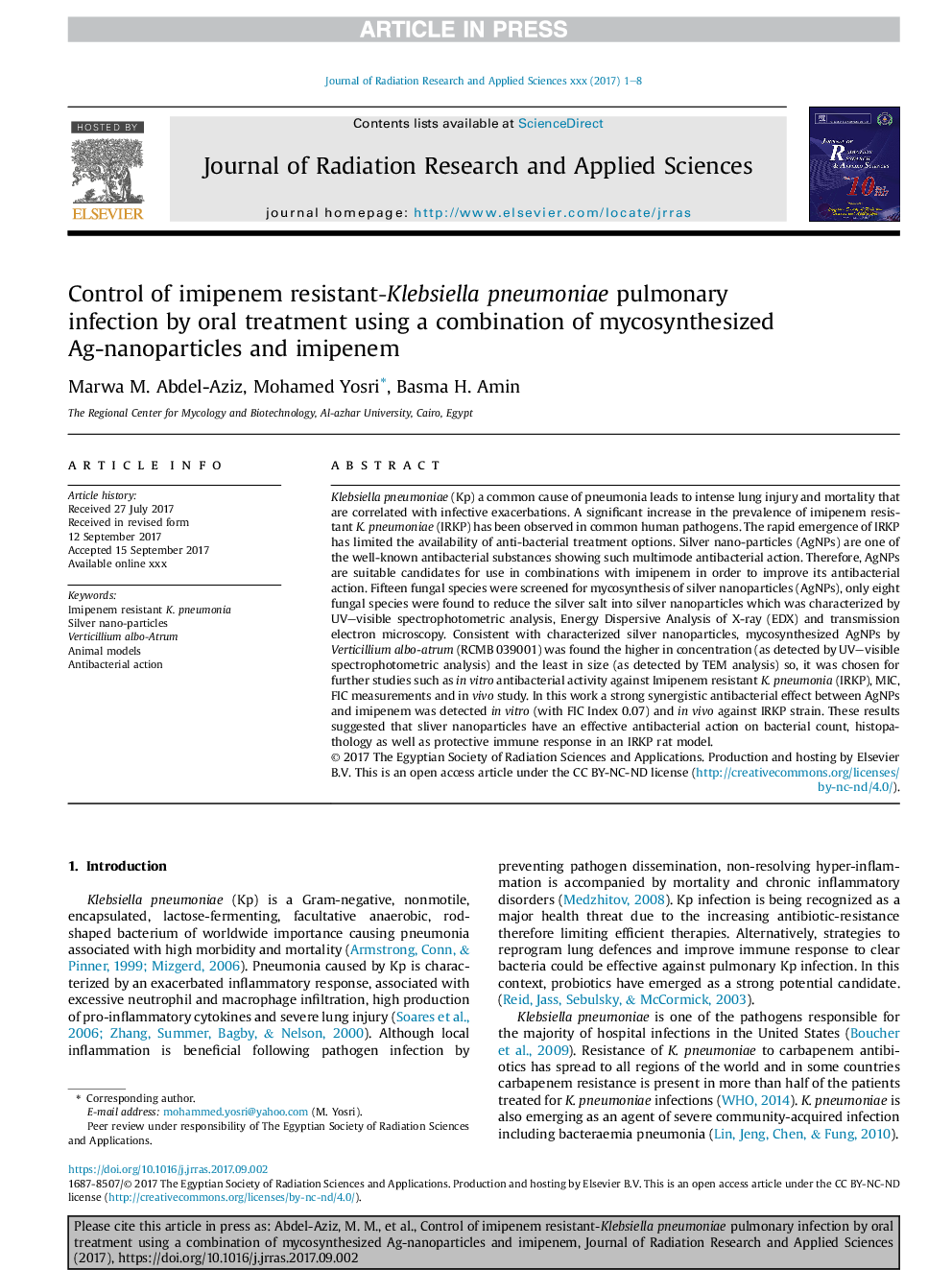| Article ID | Journal | Published Year | Pages | File Type |
|---|---|---|---|---|
| 7968911 | Journal of Radiation Research and Applied Sciences | 2017 | 8 Pages |
Abstract
Klebsiella pneumoniae (Kp) a common cause of pneumonia leads to intense lung injury and mortality that are correlated with infective exacerbations. A significant increase in the prevalence of imipenem resistant K. pneumoniae (IRKP) has been observed in common human pathogens. The rapid emergence of IRKP has limited the availability of anti-bacterial treatment options. Silver nano-particles (AgNPs) are one of the well-known antibacterial substances showing such multimode antibacterial action. Therefore, AgNPs are suitable candidates for use in combinations with imipenem in order to improve its antibacterial action. Fifteen fungal species were screened for mycosynthesis of silver nanoparticles (AgNPs), only eight fungal species were found to reduce the silver salt into silver nanoparticles which was characterized by UV-visible spectrophotometric analysis, Energy Dispersive Analysis of X-ray (EDX) and transmission electron microscopy. Consistent with characterized silver nanoparticles, mycosynthesized AgNPs by Verticillium albo-atrum (RCMB 039001) was found the higher in concentration (as detected by UV-visible spectrophotometric analysis) and the least in size (as detected by TEM analysis) so, it was chosen for further studies such as in vitro antibacterial activity against Imipenem resistant K. pneumonia (IRKP), MIC, FIC measurements and in vivo study. In this work a strong synergistic antibacterial effect between AgNPs and imipenem was detected in vitro (with FIC Index 0.07) and in vivo against IRKP strain. These results suggested that sliver nanoparticles have an effective antibacterial action on bacterial count, histopathology as well as protective immune response in an IRKP rat model.
Related Topics
Physical Sciences and Engineering
Materials Science
Materials Science (General)
Authors
Marwa M. Abdel-Aziz, Mohamed Yosri, Basma H. Amin,
